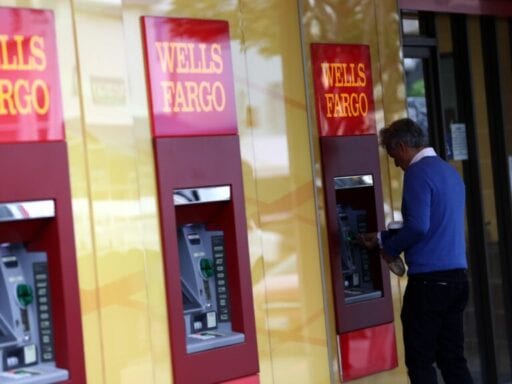A New York Times report found widespread internal concern about the bank’s priorities.
Wells Fargo lost so much public trust for the bank’s shady business practices, which came to light in the aftermath of the Great Recession, that it spent much of last year apologizing with its Wells Fargo “Re-established” campaign. But according to a new report from the New York Times, the nation’s fourth-largest bank hasn’t been reformed as much as it’s been rebranded.
According to Times reporters Emily Flitter and Stacy Cowley, “Wells Fargo workers say they remain under heavy pressure to squeeze extra money out of customers” and that employees “have witnessed colleagues bending or breaking internal rules to meet ambitious performance goals.”
There’s “no evidence” that workers are secretly opening accounts in customers’ names, as they did in the past, but employees have reportedly been pressured by Wells Fargo to sell financial products customers can’t afford, collect credit-card debt at neck-breaking speeds, and send incorrect interest rates and fee calculations on mortgages. A financial adviser interviewed noted the company pushed her to steer clients towards fee-generating investments including an instance where “it was not in the client’s best interest.”
The investigation indicated that there is large-scale concern internally among the rank-and-file workers about the authenticity of Wells Fargo’s new commitment to ethical business practices:
“In a survey of more than 27,000 employees in the bank’s information-technology department late last year, top concerns included their ability to raise grievances with managers and whether ‘Wells Fargo conducts its business activities with honesty and integrity.’ Workers recently flooded the bank’s internal blog with hundreds of angry comments about Wells Fargo’s sales incentives, pay and ethics and leaders’ ‘doublespeak,’ according to screenshots of the blog reviewed by The Times.”
In Time’s interviews responding to the criticism, Wells Fargo executives stated that the bank’s culture had improved and that fewer employees were incentivized to sell products to customers.
The long shadow of Wells Fargo impropriety
Over the last decade, Wells Fargo seemed to seek new ways to outdo itself in fraudulent activity. After the bank was caught creating fake accounts for its customers, Vox’s Emily Stewart wrote that it had developed a reputation as “one of the financial industry’s worst actors.”
The San Francisco-based firm created up to 3.5 million fake accounts for its customers over a more than seven-year span, resulting in a $185 million fine levied in September 2016, including $100 million to the Consumer Financial Protection Bureau (CFPB), the federal government’s top consumer watchdog. Wells Fargo fired at least 5,300 employees who were involved in the scam, in which they issued credit cards without customers’ consent that were only discovered when they began accumulating fees. The bank’s CEO, John Stumpf, was forced into retirement.
The bank accounts were only the most recent infraction. Leading up to the financial crisis, Wells Fargo pedaled subprime mortgages and targeted black neighborhoods with toxic loans. The bank created an emerging-markets unit that went after black churches, and investigations revealed that loan officers described black customers as “mud people” and called subprime products “ghetto loans.”
These infractions, the reports of toxic culture, and the more recent creation of fake accounts continue to undermine the company’s rebranding goals.
Which is worse, facebook’s “sorry we were evil, please trust us” TV ads… or the ones from Wells Fargo?
— wikipedia brown, chiberian tiger (@eveewing) July 6, 2018
Author: Aaron Coleman
Read More



